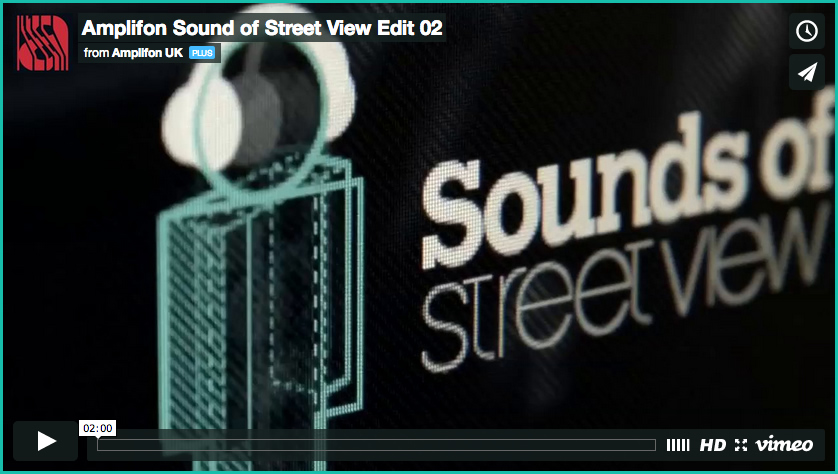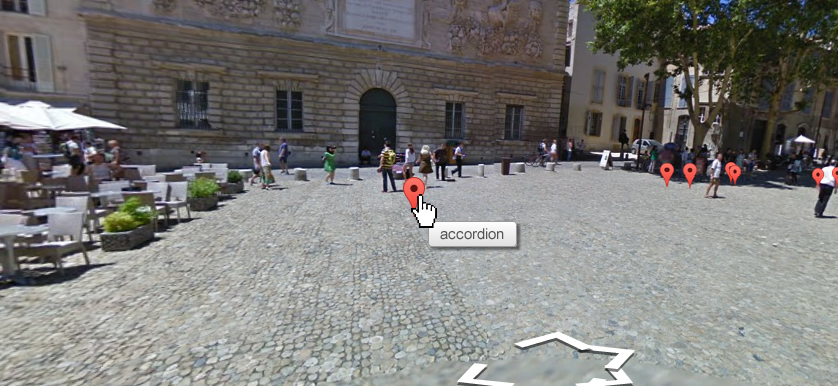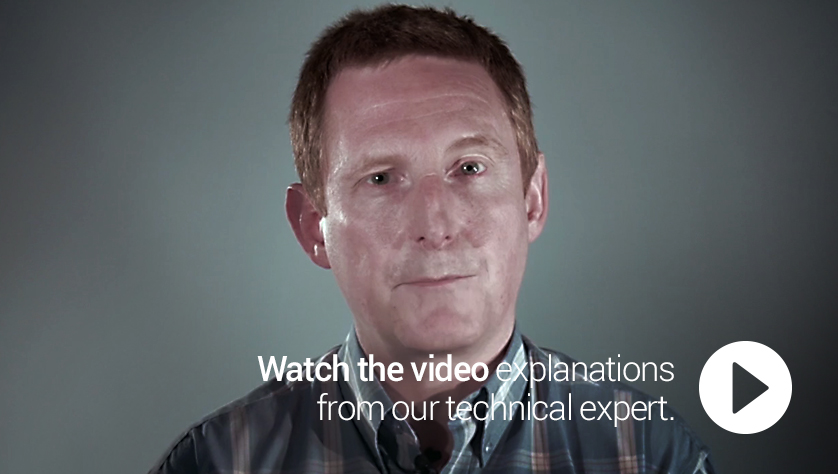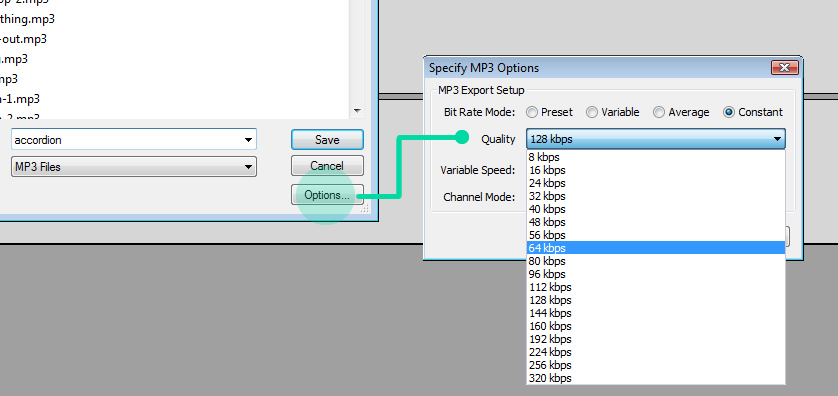###A JavaScript library to add sound to a Google Street View experience.
Watch the promotional video for an explanation and overview of what can be achieved with the Sounds of Street View Framework.
Explore three environments created by Amplifon on the Sounds of Street View website. Tell us about your Sounds of Street View project via Email or Twitter and you could win a trip of your choice! All entries are placed into our Gallery Collection too. View the Terms and Conditions for more information.
The following explanations are specifically written for those with only a rudimentary understanding of HTML and JavaScript. If you are a developer, or are confident that you have a decent understanding of these technologies, then head straight over to the demo files in the src folder, where everything should be fairly self explanatory.
The first thing to do is to include the 2 JavaScript dependencies within the head section of your HTML page. You need to load the Google Maps API and jQuery.
<!-- Load the Google Maps API -->
<script src="//maps.googleapis.com/maps/api/js?v=3.exp&sensor=false"></script>
<script src="//code.jquery.com/jquery-2.1.1.min.js"></script>
<!-- Load the Sounds of Street View code -->
<script src="js/sosv.min.js"></script>Make sure when you create this HTML element that it has a unique ID, and that the ID you provide it with matches the ID that you stipulate within your JSON data file (see below)
<div id="pano"></div>The JSON file should contain all the data for your Sounds of Street View application, including the start position of the map when the application loads, as well as the positioning and volume levels for all of your sounds. The "id" property at the start of the file should exactly match the unique ID that you gave the HTML element within your HTML (see above).
This is the demo JSON file included within the src demo as part of this repo.
{
"id": "pano",
"lat": "43.950649",
"lng": "4.806588",
"heading": "60",
"pitch": "1",
"sounds": [
{
"name": "accordion",
"lat": "43.950648973687",
"lng": "4.806433016568121",
"src": [
"audio/accordian.mp3"
],
"db": "80",
"pause": "0"
},
{
"name": "church-bell-2",
"lat": "43.951337460699705",
"lng": "4.8069440499275515",
"src": [
"audio/church-bell.mp3"
],
"db": "100",
"pause": "0"
}
... add more sound objects here ...
]
}Here is a more thorough breakdown of the properties included within the JSON data file;
id
This should match the ID of your HTML element where the Google Street View will appear
lat
This is the latitude position value where your application will start upon load
lng
This is the longitude position value where your application will start upon load
heading
This is the heading position value where your application will start upon load (ie. which direction the user is facing)
pitch
This is the pitch position value where your application will start upon load (ie. how low or high the user is facing)
sounds
This is an array of sound objects (denoted by the square brackets) that will be positioned within your application.
The Framework does not impose any limits upon how many sounds you can add, however be aware that any computer viewing
your app will have limitations for how many current sounds it can track and play depending upon the processing
power of the machine.
Each sound has the following properties;
name
Although the user will not see this name, it can be useful when building your application as
the name of each sound object will appear on hover (as shown below) when you view your application in dev mode.
You can trigger dev mode by appending ?dev=true to the end of your application URL.
lat
This is the latitude position where your sound will be positioned on your Street View map
lng
This is the longitude position where your sound will be positioned on your Street View map
src
The path to the mp3 file associated with the sound object
db
The "loudness" of the sound, ie how far away it can be heard from. Although db suggests
that this is the decibel level for a sound it is not calculated at decibel levels. The db property
should be a value between 1 and 100, with 1 being very quiet and 100 being very loud.
pause
The length of time to wait between each loop of the sound. This is a length of time in
milliseconds so a 1 second pause between each loop would have a pause value of 1000.
For more explanation on how the individual sound formulas come together, visit our collection of video explanations from our technical expert. https://vimeo.com/album/2977202
Here is a list of great street view locations to get you started, with the lat and lng values already supplied!
- Millenium Park, Chicago - "lat": "41.882772", "lng": "-87.622462"
- Central Park, New York - "lat": "40.774459", "lng": "-73.970928"
- Venice - "lat": "45.437134", "lng": "12.333657"
- Rainforest, Manaus, Brazil - "lat": "-2.945071", "lng": "-60.676237"
- Florence, Italy - "lat": "43.773421", "lng": "11.25517"
By adding "?dev=true" to the end of your URL, you will be able to see the markers which are normally invisible in your application. To start, once you have a street view location, give a sound the same lat and long values as this location, then find it by walking away from your start position.
You can then drag any marker around and place it where the sound is being emitted from. The JSON code to insert for this sound will update in the panel, ready to copy and paste into your file. It's important to get positioning accurate so that a sound is heard from the correct source - so walk around the marker, as near as possible and keep dragging and dropping till it seems as close as possible. In the best scenario, walk 'on' the sound source and drag the marker to your feet.
If you are unfamiliar with writing JSON then it can be frustrating as a simple comma in the wrong place, or a missing quotation mark can break your application (hint shown in image below). You can use an online JSON linting tool to find and remove any errors you may have in your data.
Creating your sounds can be done in a number of ways. You can either create them yourself, or purchase them from audio sample websites (such as http://audiojungle.net). For a free and easy program to create from scratch or alter sounds, download Audacity at http://audacity.sourceforge.net/download/.
When exporting your MP3s from Audacity (or other software of your choice), export at as low quality as possible so that your application loads as quickly as possible. Because you will create a range of different sounds, small quality intricacies aren't as noticeable as normal. We recommend 64kbps as shown below.
In order to get your application to run the last thing you need to do is to create a new SOSV object in your custom JavaScript. As the project is using jQuery as a dependency the easiest way is to do it on the jQuery DOM ready. Make sure that the path to your JSON file is correct!
<script>
$(function(){
new SOSV('data/demo.json');
});
</script>The MIT License
Copyright (c) 2014 Amplifon
Permission is hereby granted, free of charge, to any person obtaining a copy of this software and associated documentation files (the "Software"), to deal in the Software without restriction, including without limitation the rights to use, copy, modify, merge, publish, distribute, sublicense, and/or sell copies of the Software, and to permit persons to whom the Software is furnished to do so, subject to the following conditions:
The above copyright notice and this permission notice shall be included in all copies or substantial portions of the Software.
THE SOFTWARE IS PROVIDED "AS IS", WITHOUT WARRANTY OF ANY KIND, EXPRESS OR IMPLIED, INCLUDING BUT NOT LIMITED TO THE WARRANTIES OF MERCHANTABILITY, FITNESS FOR A PARTICULAR PURPOSE AND NONINFRINGEMENT. IN NO EVENT SHALL THE AUTHORS OR COPYRIGHT HOLDERS BE LIABLE FOR ANY CLAIM, DAMAGES OR OTHER LIABILITY, WHETHER IN AN ACTION OF CONTRACT, TORT OR OTHERWISE, ARISING FROM, OUT OF OR IN CONNECTION WITH THE SOFTWARE OR THE USE OR OTHER DEALINGS IN THE SOFTWARE.






